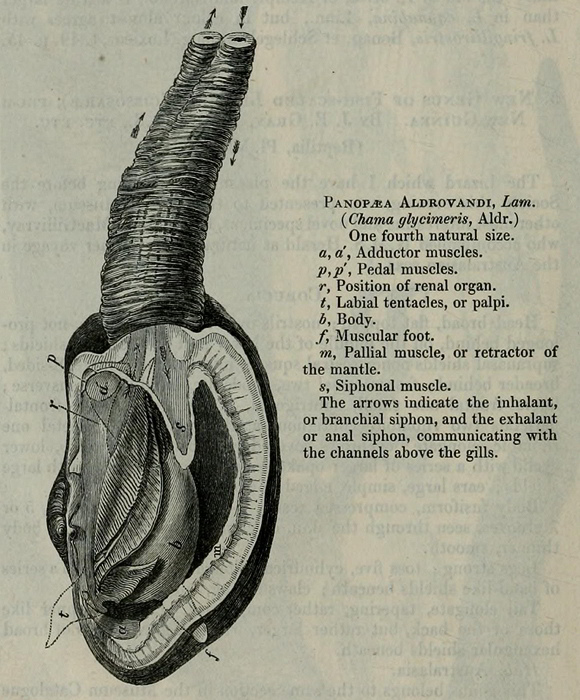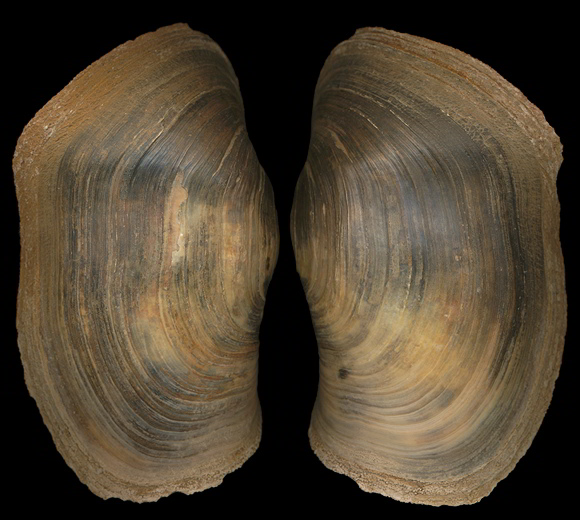
NW. Spain to Namibia, Alborán Sea, S. France, eastern Sicily (Scotti & al.). Fossils are found in eastern Mediterranean. Original taxon: Mya glycimeris. Synonyms: aldrovandi or cyclopana. This is a filter feeder, which lives deeply burrowed in sediments, often with a muddy or silty part, from upper sublittoral to about 80m deep. Huge siphons.
Shell « big and solid, equivalve, inequilateral, highly gaping at both ends. The valves are very convex, with contiguous umbones on the front. The anterior and posterior margins are oblique. The ventral and dorsal margins are almost parallel. The external shell surface shows many irregular growth lines, which become lamelliform on the front. The right valve has a single, conical, prominent, cardinal tooth which is lamelliform in the left valve. The anterior adductor scar is sub-triangular while the posterior adductor scar is oval. » (Scotti & al.)
Shell « big and solid, equivalve, inequilateral, highly gaping at both ends. The valves are very convex, with contiguous umbones on the front. The anterior and posterior margins are oblique. The ventral and dorsal margins are almost parallel. The external shell surface shows many irregular growth lines, which become lamelliform on the front. The right valve has a single, conical, prominent, cardinal tooth which is lamelliform in the left valve. The anterior adductor scar is sub-triangular while the posterior adductor scar is oval. » (Scotti & al.)
15-30m deep, Málaga, Andalucia, S. Spain. 215mm.
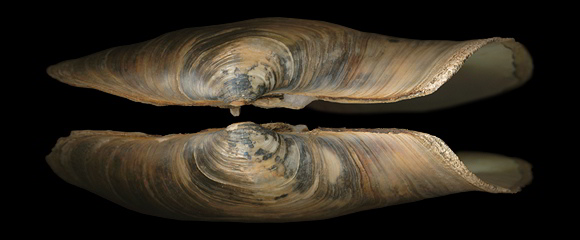
« Testa subovata umbonata laevis, pone apices utrinque coarctata, extremitates oblique truncatae hiantes.
Dens anticus fere longitudine ligamenti, crassissimus, posticus minor, subjacens apicibus incurvatis, retro quos series crenularum extenditur. Color pallido griseus. » – I. Von Born: Index rerum naturalium Musei Caesarei Vindobonensis, Vienna 1778.
Notice the single cardinal tooth protruding on the left valve.
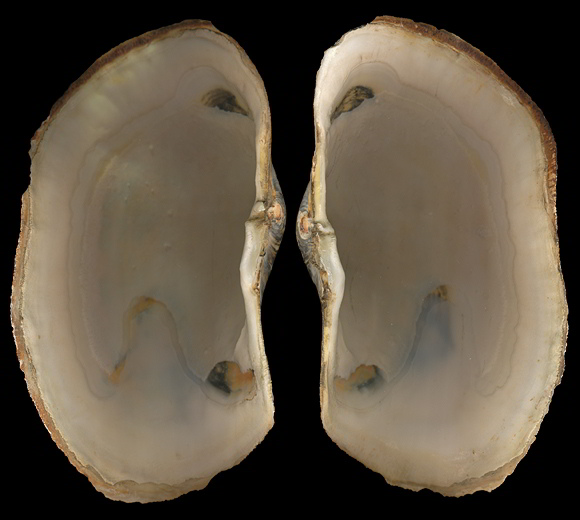
« Testa permagna, ovato-oblonga, cylindrico-inflata; latere antico breviore, oblique truncato; margo dorsalis subrectus,
ventralis medio parum sinuatus; laevis, nitida, striis incrementi irregulariter subrugosa. — Length over 200mm. » – S. Clessin: “Saxicavidae”, Syst. Conch. Cab. Bd.11:Abt.4a.
Inner view.
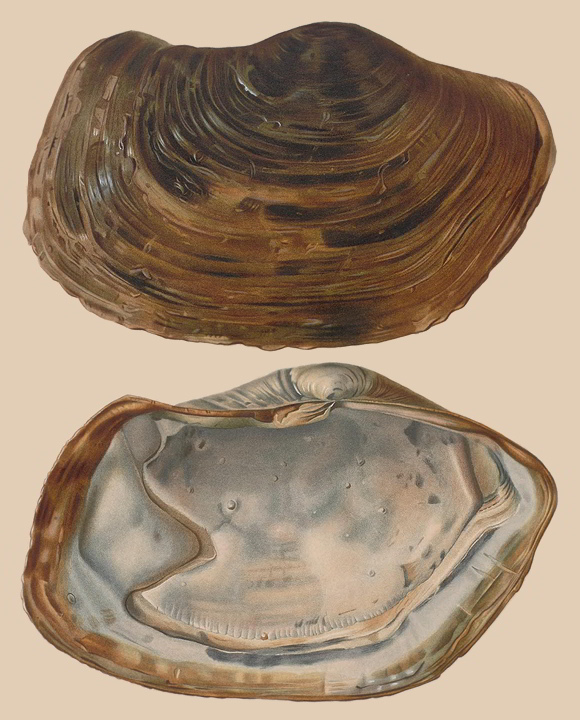
Illustrations conchyliologiques, Paris, no date, via BHL.
« This genus was anciently of more importance than now, for during the Jurassic epoch there existed many species in our seas. They gradually decreased in numbers till the present time. The few species known are natives of the North Atlantic, Lusitanian, South African, Patagonia, and New Zealand seas, one only inhabiting each region. » – Forbes & Hanley: A hist. of British Mollusca and their shells, vol. I, London 1853.
